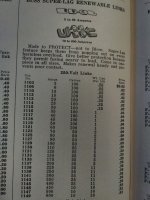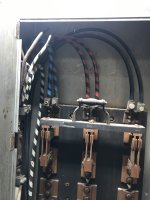Grouch
Senior Member
- Location
- New York, NY
The 400 amp and 600 amp fused disconnects, located downstream from this switch, they are about 5 to 10 feet away, all located in the main electrical room. I'm assuming they are not considered 'nearby OCPD's', but rather the actual service switches?Without nearby OCPD, this cannot be the service disconnect. It would be an auxiliary disconnect,which may not be allowed by code in this configuration.
The downstream conductors would still be service conductors, with all the restrictions on where inside the building they may be run. And each downstream panel would be a service disconnect which has to be grouped with all other service disconnects. And they would have to be rated as suitable for use as service equipment.




